
Layout, design and features – exterior …
The front is dominated by the huge, continuous mesh front panel, which consists of a coarse-meshed metal grille and is complemented by a fine-meshed dust protection grille behind it, which significantly reduces the view of the fans behind it. On closer inspection, the ventilation slots indicated on the side turn out to be merely design elements, as they are closed and do not contribute to the ventilation of the case.
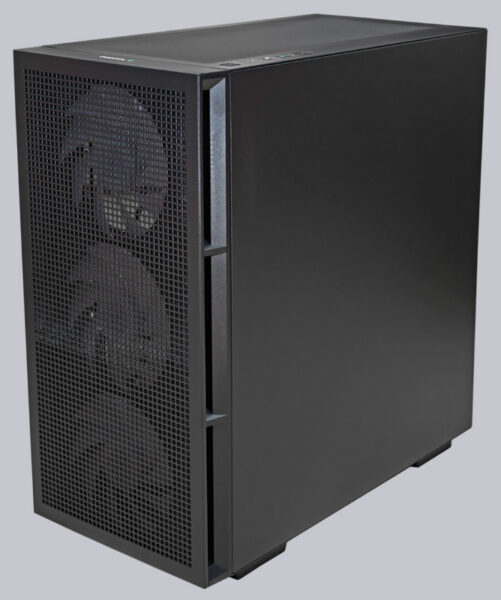
On the front side panel is the stylish hybrid side panel, the upper half of which is made of tinted glass and the lower half of which consists of a metal grille with a tinted plastic window that provides a view of the LCD. The holding force of the magnetic fixation of the side panel has been perfectly balanced – not too tight and not too loose. As an option, the hybrid side panel can also be fixed in place with an additional screw, which is included in the scope of delivery, so that nothing can happen during transportation without the original packaging. For the rear side panel, on the other hand, simple knurled screws were chosen for fastening.
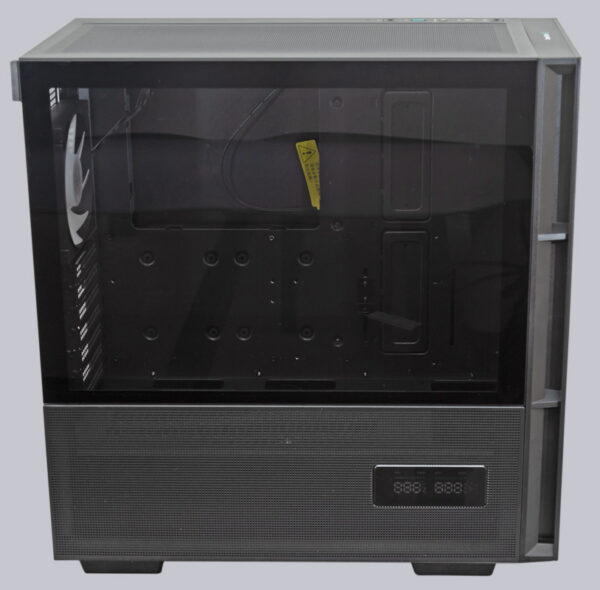
The front panel is easy to grip and comes off with a firm tug. I don’t have to worry about tearing off a cable as there are no electrical components inside. There are no openings in the frame of the case around the fans, which ensures that preheated air from inside the case is not sucked in again by the fans. This means that the three pre-installed 140mm A-RGB fans always bring fresh, cold air into the case from outside.
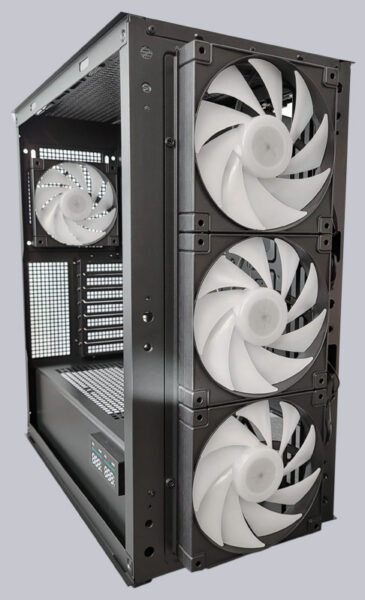
There are also two types of mesh at the top. The dust protection grille attached to the outside is of a simple design and holds weakly magnetically to the housing. Its perforation is not too fine and not too coarse, so that both dust protection and air permeability can be guaranteed in decent dimensions.
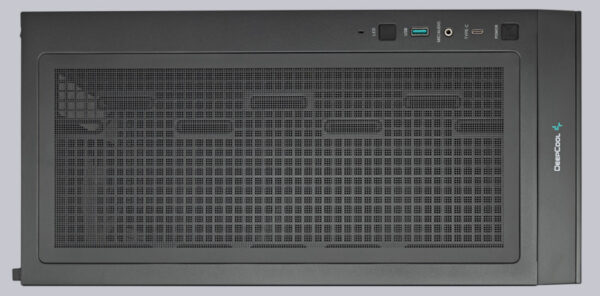
The airflow of the optional 120mm or 140mm fans in the roof is not restricted too much by the grille and the mounting brackets. Deepcool has obviously tried to achieve maximum airflow with good stability. The position of the connection sockets and buttons was chosen less optimally, as they are located above the rear side panel and are therefore sometimes difficult to access depending on where the PC is installed. In addition, one USB-A and one USB-C socket are rather spartan basic features and do not really fit into the price range advertised by DeepCool. A reset button is also missing, as the LED button cannot simply be converted into a reset button without soldering.
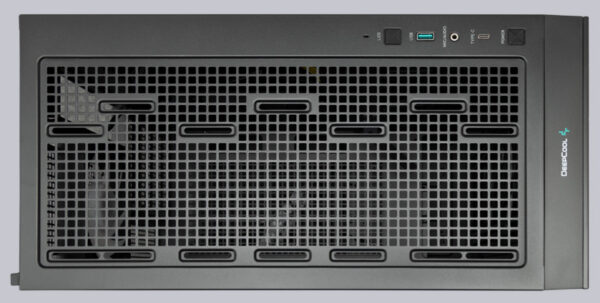
At the rear, there is even more of the familiar rectangular perforated grille with large openings that hardly hinder the flow of warm air. The pre-installed 120mm A-RGB fan can be variably positioned in height. Alternatively, a 140mm fan could also be mounted in a fixed position.
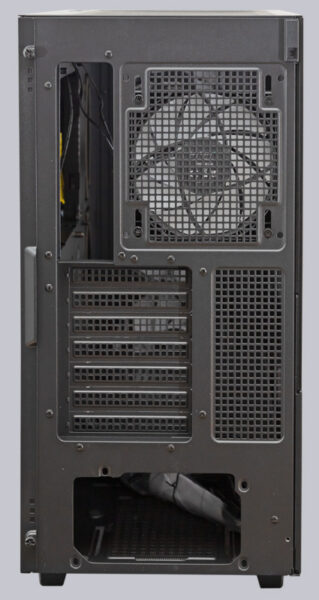
The base of the case has four large adjustable feet with well-damped rubber inserts that give the case a firm stand. Under the power supply unit there is a further, close-meshed dust protection grille of a particularly simple design. Obviously, a higher-quality grille with a frame was planned when the base of the case was designed, which was later simplified, presumably for cost reasons. This results in unnecessarily large openings through which dust can enter the housing unhindered. This also applies to the alternative mounting holes for the hard disk cage. A larger grille covering the entire base of the case would have made more sense, as the small grille does not even cover the entire fan of the power supply unit. In addition, the case has to be placed at least on its side wall in order to clean the grille, which is also not particularly user-friendly.
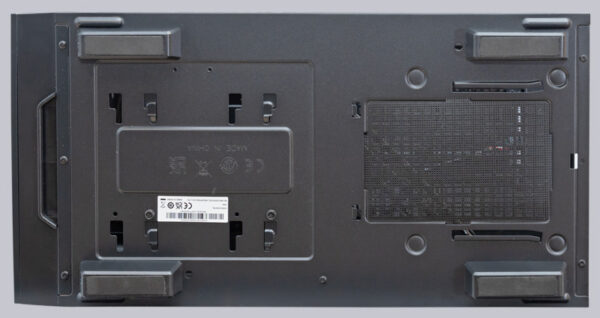
DeepCool CH560 Digital Layout, design and features interior …

